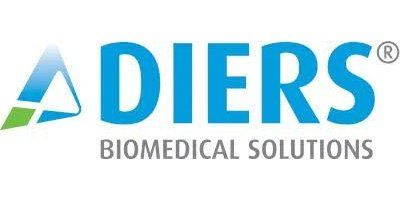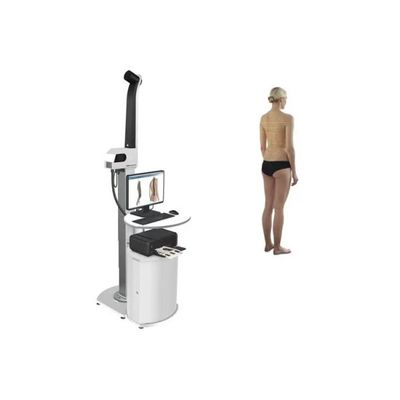

- Home
- Companies
- DIERS International GmbH
- Products
- DIERS - Model Formetric 4D - Pioneer ...

DIERS - Model Formetric 4D - Pioneer Technology for Light-optical 3D/4D Spine & Posture Analysis
The DIERS formetric is a light-optical scanning method based on Video-Raster-Stereography (VRS). Accordingly, the system consists of a light projector which projects a line grid on the back of the patient which is recorded by an imaging unit. A computer software analyzes the line curvature and generates from it – by means of the method of the Photogrammetrie – a three-dimensional model of the surface, comparable to a plaster cast. In opposition to x-ray, the DIERS formetric provides comprehensive information about the whole body statics and posture in only one measuring process, e.g. spine curvature (lateral and frontal), vertebral rotation, and pelvic position. Even muscular dysbalances can be detected based on the curvature image of the back surface.
- Radiation-free & Contactless
- Fast Examination Procedure
- Compact Dimensions (only 1,5 x 3 m)
- High Economic Efficiency
Unlike any other systems, the DIERS formetric also delivers a 3D reconstruction of the spine without using reflecting marker dots. By the Automatic Detection of Anatomical Landmarks and a scientifically based Correlation Model (by Turner-Smith & Drerup), which describes the relation between the surface curvature and the orientation of the vertebra, it is possible to reconstruct the curve of the spine and the pelvic position.
The innovative 4D technology (3D + time) ensures a high measurement precision and reproducibility. By means of serial image recording and averaging it’s possible to compensate postural variances due to unavoidable body sway of the patient during the measurement procedure. Furthermore even posture tests and functional studies can be taken over a period of time (e.g. Matthiass-Test, Flamingo-Test, Romberg-Test).
There is generally no need for reflecting markers, because the anatomical fixpoints Vertebra Prominens (VP), Sacrum Point (SP), Dimple Left (DL) Dimple Right (DR) as well as the spinal center line and spinal rotation are automatically detected by the system. That allows a very time-saving and reliable examination procedure.
- Scoliosis
- Hyper -/Hypo-Lordosis/-Kyphosis
- Pelvic Obliquity / Rotation / Torsion
- Posture-related Pain Symptoms
- Temporomandibular Joint Dysfunction (TMJ)
- Osteoporosis
- Arthrosis
- Neurologic Symptoms (e.g. Romberg-Test)
- Muscle Deficits/Imbalances (Matthiass-Test, Flamingo Test)
